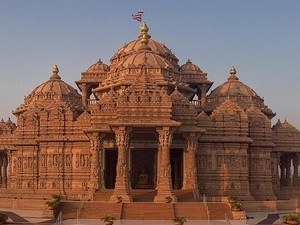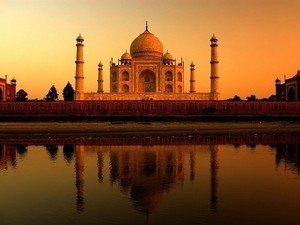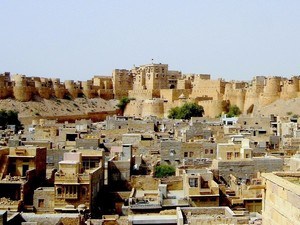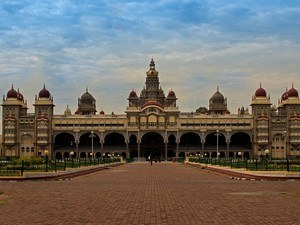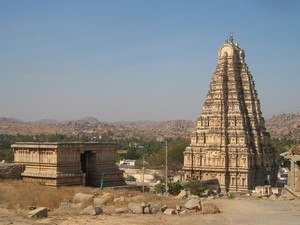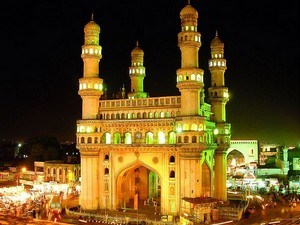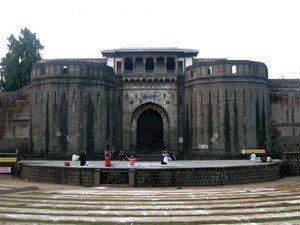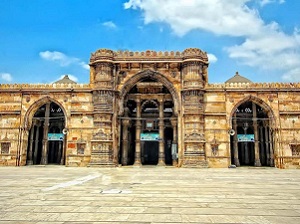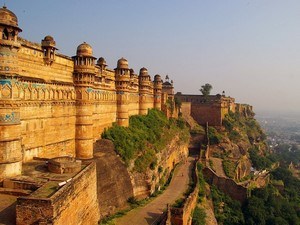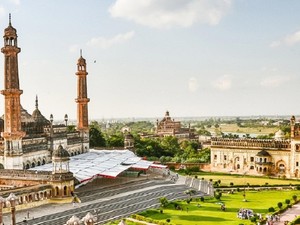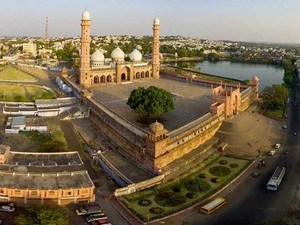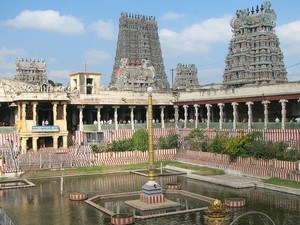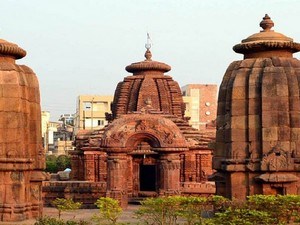1
DAY 1 : TRAVEL TO JAIPUR & JAIPUR SIGHTSEEING
DAY 1 : TRAVEL TO JAIPUR & JAIPUR SIGHTSEEING
 Sightseeing
Sightseeing
Leisure / No Sightseeing
At a distance of 13 km from Jaipur Junction Railway Station, Amer Fort or Amber Fort is located in Amer near Jaipur. It is one of the best-preserved forts in Rajasthan, and among the prime place to include in Jaipur packages.
Amber was founded by the Meenas in 967 AD and they dedicated the town to Amba, the Mother Goddess. Around 1037 AD, Amber was conquered by Kachhawa Rajputs and ruled from the 11th to the 18th century, until the capital was moved from Amer to Jaipur. The Amber Fort was built by Raja Man Singh in 1592 AD and it was further expanded by successive rulers. Man Singh was one of the trusted generals of Emperor Akbar and one among the Navaratnas of his court. Later in 1727 AD, Sawai Jai Singh II moved the capital from Amber to Jaipur.
The architecture of Amer Fort is influenced by both Hindu and Muslim styles. Among the famous tourist places in Jaipur, Amer .....
 Duration of visit: 2 Hours
Duration of visit: 2 Hours
 Timings: Timings: 8 AM to 5.30 PM
Timings: Timings: 8 AM to 5.30 PM
At a distance of 11 km from Jaipur Junction Railway Station and 8 km from Amer Fort, Jal Mahal or the Water Palace is a palace located in the middle of the Man Sagar Lake in Jaipur. This is one of the biggest artificial lakes in Jaipur. The lake used to be a bird watcher's paradise in the past and was a favorite ground for the Rajput kings of Jaipur for royal duck shooting parties during picnics.
Jal Mahal was built in 18th century by Sawai Madho Singh I. Jal Mahal was constructed for serving the purpose of a summer resort for his family and guests. The palace was renovated and expanded in the 18th century by Madho Singh II. The Jal Mahal palace is considered an architectural beauty built in the Rajput and Mughal styles of architecture. It provides a picturesque view of the lake from the Man Sagar Dam and the surrounding Nahargarh hills. The palace was built using red sandstone. It is a five storied building out of which four floors remain under water when the lake is full and the .....
 Duration of visit: 30 Mins - 1 Hr
Duration of visit: 30 Mins - 1 Hr
 Timings: 9 AM to 5 PM
Timings: 9 AM to 5 PM
At a distance of 11 km from Jaipur Junction Railway Station, Khole Ke Hanuman Ji is an ancient temple situated at Laxman Dungri in Jaipur. This temple is considered to be one of the famous temples in Jaipur, and among the must include places in Jaipur tour packages.
Khole Ke Hanuman ji Temple is dedicated to the Lord Hanuman. The inner sanctum of the temple is quite large and can accommodate 500 devotees. The temple is situated on a hillock and devotees have to walk around 1 km to reach the temple. The temple has an attractive entrance archway. The temple is known for its magical power and it is believed that the wishes of the devotees are always fulfilled. It is one of the popular Jaipur places to visit, especially for religious people.
The natural view of Aravali hill is magnificent from the temple and surrounding places. A large number of tourists .....
 Duration of visit: 1 Hour
Duration of visit: 1 Hour
 Timings: 6 AM to 8.30 PM
Timings: 6 AM to 8.30 PM
2
DAY 2 : JAIPUR SIGHTSEEING
%%Itinerary_Title_Day2%%
At a distance of 5.5 km from Jaipur Junction Railway Station, City Palace is a beautiful palace complex situated in the heart of Jaipur City. It is one of the popular palaces in Rajasthan, and among the famous places to visit as part of Jaipur tour.
The palace was built between 1729 and 1732 AD by Sawai Jai Singh II. He planned and built the outer walls and later additions were made by successive rulers till the end of the 20th century. City Palace was the seat of the Maharaja of Jaipur, the head of the Kachhwa Rajput clan. Part of the palace currently houses a museum, though the major part is still a royal residence. It one of the most famous Jaipur tourist places.
The City Palace reflects Rajput, Mughal, and European architectural styles although it was designed according to Vaastushastra. The Palace .....
 Duration of visit: 1-2 Hours
Duration of visit: 1-2 Hours
 Timings: 9 AM to 5 PM
Timings: 9 AM to 5 PM
At a distance of 5.5 km from Jaipur Junction Railway Station, Jantar Mantar is located near City Palace and Hawa Mahal in Jaipur. It is one of the top tourist places in Jaipur City. This monument is the largest of the five astronomical observatories present in India. The other four astronomical observatories are located at Delhi, Varanasi, Mathura and Ujjain. It features the world's largest stone sundial, and is a UNESCO World Heritage site.
The Jantar Mantar was built by the Rajput king Sawai Jai Singh II and completed in 1738 AD. The name is derived from jantar means yantra and mantar means calculation. The Jaipur observatory was functional for seven years only, as the Maharaja was not very successful in deriving accurate, astronomical observations. It was later restored in the year 1901 and was declared as a national monument in the year 1948.
The .....
 Duration of visit: 30 Mins - 1 Hr
Duration of visit: 30 Mins - 1 Hr
 Timings: 9:30 AM to 4:30 PM
Timings: 9:30 AM to 4:30 PM
At a distance of 6 km from Jaipur Junction Railway Station, Hawa Mahal is one of the prime tourist places to visit in Jaipur city. The palace sits on the edge of the City Palace and extends to the Zenana (women's) chambers. Hawa Mahal is often represented in promotion of Jaipur Tourism. Jaipur is among the top places to visit near Delhi.
The renowned Hawa Mahal or the Palace of Winds was constructed in 1799 by Maharaja Sawai Pratap Singh as a continuation to the stunning City Palace. The main architect of this palace is Lal Chand Ustad and the palace is believed to have been constructed in the form of the crown of Krishna, the Hindu God.
Hawa Mahal was built in Rajputana architectural style. The palace is constructed of beautiful red and pink sandstone and it looks like a five storeyed Pyramid. The palace stands on a podium which is fifty .....
 Duration of visit: 30 Mins
Duration of visit: 30 Mins
 Timings: 9 AM to 4.30 PM
Timings: 9 AM to 4.30 PM
At a distance of 6 km from Jaipur Junction Railway Station, Albert Hall Museum is a museum situated in Ram Niwas Garden outside the city wall opposite the new gate in Jaipur. It is the oldest museum in Rajasthan, and one of the popular places of sightseeing in Jaipur.
The Albert Hall Museum is functioning as the State Museum of Rajasthan. The Hall was built by Maharaja Sawai Ram Singh II. The foundation stone of Albert Hall was laid during the visit of the Prince of Wales, Albert Edward to Jaipur in 1876 and it was completed in 1887. The building was designed by Sir Samuel Swinton Jacob and was opened as a public museum in 1887. It is also called the Government Central Museum. Maharaja Ram Singh initially wanted this building to be a town hall, but his successor, Madho Singh II, decided it should be a museum for the art of Jaipur.
It is a fine example of Indo-European architecture. The design of .....
 Duration of visit: 1-2 Hours
Duration of visit: 1-2 Hours
 Timings: 9 AM to 5 PM on all days. Closed on Friday
Timings: 9 AM to 5 PM on all days. Closed on Friday
At a distance of 6 km from Jaipur Junction Railway Station, Jaipur Zoo is one of the most popular zoological parks in India, situated in Ram Niwas Gardens of Jaipur. The zoo is part of conservation breeding programs of the Central Zoo Authority and Government of Rajasthan for the ghariyal, cheetal and crocodile. A trip to the Zoo is one of the popular things to do in Jaipur city.
The zoo was opened in 1877 and is located near to the Albert Hall Museum. The Zoo is divided into two parts, the Animal Section and the Bird Section along with reptiles. One can spot more than 70 species of animals, birds and reptiles. The animal section accommodates a number of animal species like Lions, leopards, tigers, white tigers and panthers. One can also spot hyenas, alligators, tortoises, jackals, foxes, bears, and a diversity of deer. The zoo is also the residence of some multicolored species of birds that comprise geese, ducks, babbling lorry, white .....
 Duration of visit: 1-2 Hours
Duration of visit: 1-2 Hours
 Timings: 9 AM to 5 PM. Closed on Tuesdays
Timings: 9 AM to 5 PM. Closed on Tuesdays
At a distance of 6 km from Jaipur Junction Railway Station, Birla Mandir is a Hindu temple located at the base of Moti Dongri Hill in Jaipur. The temple is sometimes also referred to as the Laxmi Narayan Temple. It is one of the major places to visit in Jaipur.
This marvelous temple was built during the year 1988 by Birla Group of Industries, one of the business tycoons of India. According to history, the Birla temple was built on the land given to the Birla family by the Maharaja.
The Temple is dedicated to Lord Vishnu (Narayan) and his consort Lakshmi. The images of Lakshmi and Narayan attract the attention, being made out from one piece of marble. Standing on a raised platform, Birla Temple is made out with the premium quality of white marble. The temple looks stunning, when it is brightly lit in the night. The three huge domes of the temple represent three different approaches to the religion. .....
 Duration of visit: 1 Hour
Duration of visit: 1 Hour
 Timings: 6 AM - 12 PM & 3 PM - 8:30 PM
Timings: 6 AM - 12 PM & 3 PM - 8:30 PM
3
DAY 3 : TRAVEL TO BIKANER & BIKANER SIGHTSEEING
%%Itinerary_Title_Day2%%
 Sightseeing
Sightseeing
At a distance of 2 km from Bikaner Junction Railway Station, Junagarh Fort is a historical fort situated in the Bikaner town of Rajasthan, India. It is one of the well-preserved forts in India and among famous historical places near Delhi.
Junagarh Fort is one of the famous monuments of Bikaner that draws the attention of tourists as part of Bikaner holiday packages. Originally called Chintamani, the fort was renamed Junagarh or 'Old Fort' in the early 20th century when the ruling family moved to Lalgarh Palace outside the fort limits. The modern city of Bikaner has developed around the fort. Junagarh Fort was originally built by Raja Rai Singh, the 6th ruler of Bikaner, between 1589 & 1593 AD. Several additions were done by many kings, which have resulted in many palaces, museums, temples, and gardens. This fort is attacked several times but never been conquered. .....
 Duration of visit: 1 Hour
Duration of visit: 1 Hour
 Timings: 10 AM - 4.30 PM, Museum: 9 AM - 6 PM
Timings: 10 AM - 4.30 PM, Museum: 9 AM - 6 PM
At a distance of 5 km from Bikaner Fort and 4 km from Bikaner Junction Railway Station, Lalgarh Palace is a royal palace situated in Bikaner. It is one of the few palaces commissioned by the British for the Indian kings and also one of the top Bikaner places to visit.
Standing amidst the regal grandeur and conveying the glorious tales of royalty, the Lalgarh Palace in Bikaner is one of the most imposing palaces in the history of Rajasthan. The palace was built for Maharaja Ganga Singh by the British architect Sir Samuel Swinton Jacob between 1902 and 1926 CE.
The Lalgarh Palace is a classic example of Indian, European, and Mughal architecture. The three-storey complex is built with red sandstone extracted from the Thar Desert. The royal family of Bikaner still lives in the palace and has one part for themselves. The palace has a beautiful portico and features many overhanging balconies and latticework. .....
 Duration of visit: 1 Hour
Duration of visit: 1 Hour
 Timings: Museum: 10 AM - 5 PM, Closed on Sundays
Timings: Museum: 10 AM - 5 PM, Closed on Sundays
At a distance of 5 km from Bikaner Junction Railway Station, Laxmi Niwas Palace is a heritage building situated in the Lalgarh Palace complex of Bikaner, Rajasthan. It is one of the beautiful royal palaces of Rajasthan and also one of the top heritage places to visit in Bikaner.
The Laxmi Niwas Palace was the former residential palace of the king of Bikaner, Maharaja Ganga Singh. Built between 1898 and 1902 CE, Laxmi Niwas Palace was commissioned by Maharaja Sir Ganga Singh and was designed by Sir Samuel Swinton Jacob. The Maharaja of Bikaner was also motivated to build the palace as a means to stimulate employment in the region. Upon its completion, plans were made to expand the estate into the much larger Lalgarh Palace which was constructed between 1902 and 1926 CE.
Laxmi Niwas Palace is constructed in Indo-Saracenic style, an architectural movement popularized in the 19th century in British India. The palace was constructed using pink sandstone, brought from the stone .....
 Duration of visit: 30 Mins - 1 Hr
Duration of visit: 30 Mins - 1 Hr
 Timings: Guided Tour: 10 AM - 6 PM
Timings: Guided Tour: 10 AM - 6 PM
At a distance of 2 km from Bikaner Junction Railway Station, Rampuria Havelis are a group of havelis situated in Bikaner, Rajasthan. Rampuria Group of Havelis is one of the famous heritage sites in Bikaner and also one among the top Bikaner tourist places.
The Rampuria Group of Havelis is among the well-known Havelis of Bikaner and is known for more than 400 years old architectural splendor. These havelis were constructed by Balujee Chalva under the orders of a rich merchant Rampuria family. The construction of the havelis is said to be initiated from 15th century onwards. The Rampuria merchants are said to go in foreign lands for 9 months of a year and spend rest of the months in cherishing their wealth by decorating their mansions and enjoying at home.
The Rampuria Group of Havelis is constructed of Dulmera red sandstone as the crucial base material. This popular tourist place is adorned with excellent and exquisite handiwork prevalent during the 15th century. Most of the .....
 Duration of visit: 1 Hour
Duration of visit: 1 Hour
 Timings: 6 AM to 6 PM
Timings: 6 AM to 6 PM
4
DAY 4 : TRAVEL TO JAISALMER & JAISALMER SIGHTSEEING
%%Itinerary_Title_Day2%%
 Sightseeing
Sightseeing
At a distance of 40 km from Jaisalmer, Sam Sand Dunes are situated at the edge of Jaisalmer Desert National Park in Rajasthan. Lies in the midst of the Thar Desert, these sand dunes are amongst the most popular places to experience Rajasthan Tourism, and also one of the prime places to visit during Jaisalmer tour.
Sam has a truly magnificent stretch of sweeping dunes, with sparse or no vegetation. The 3 km long, and 1 km wide sand dunes reflect the true image of Rajasthan. Undeniably one of the most picturesque spots in the desert, the Sam Sand Dunes have gained a tremendous tourist reputation over time. The unrelieved ocean of sand constantly changes its appearance at every gentle gush of wind. The whirling air currents of this area match with those of the sandstorms in the Sahara.
Camel Safari at Sam Sand Dunes is one of the top things to do in Jaisalmer. The .....
 Duration of visit: 4 Hours/Half Day
Duration of visit: 4 Hours/Half Day
 Timings: 6 AM to 6 PM
Timings: 6 AM to 6 PM
5
DAY 5 : JAISALMER SIGHTSEEING & TRAVEL TO JODHPUR
%%Itinerary_Title_Day2%%
At a distance of 1.5 km from Jaisalmer Railway Station, Jaisalmer Fort locally known as Sonar Quila (Golden Fort) is located in the heart of Jaisalmer city. It is one of the largest forts in India, and among the must include places in Jaisalmer holiday packages.
Jaisalmer Fort is a World Heritage Site declared by UNESCO under the group hill forts of Rajasthan. Jaisalmer Fort was built atop the Trikuta Hill in 1156 AD by the Bhati Rajput ruler Maharawal Jaisal Singh. It was the center of several historical encounters between the Bhattis, Mughals, and Rathores of Jodhpur. The Fort of Jaisalmer survived several attacks by the Muslim rulers like Aladdin Khilji and Mughal Emperor Humayun. The city also served as a refuge and way-station for caravans and travelers along the Silk Road.
Standing proudly in the middle of the great Thar Desert, this fort is regarded as 'The Pride .....
 Duration of visit: 2 Hours
Duration of visit: 2 Hours
 Timings: 9 AM to 6 PM
Timings: 9 AM to 6 PM
At a distance of 500 m from Jaisalmer Fort and 2 km from Jaisalmer Railway Station, Nathmalji ki Haveli is a renowned architectural marvel in the heart of Jaisalmer near Patwon ki Haveli. It is one of the prominent Jaisalmer places to visit.
Nathmalji ki Haveli was constructed by Maharawal Berisal in 1885 CE, to serve as the residence of Diwan Mohata Nathmal, the then Prime Minister of Jaisalmer. The chief architects of this haveli were two brothers, named Hathi and Lulu. There is a very interesting story regarding its construction. It is believed that both the brothers started building the facets of the haveli simultaneously. The two sides are similar, but not identical.
This haveli is famous for its architecture that reflects the fusion of both Rajput and Islamic styles. The building is planned around two courtyards; the one in the front is much smaller than the rear one. The front part of the .....
 Duration of visit: 30 Mins
Duration of visit: 30 Mins
 Timings: 8 AM to 6 PM
Timings: 8 AM to 6 PM
At a distance of 500 m from Jaisalmer Fort and 1.5 km from Jaisalmer Railway Station, Patwon-ki-Haveli is situated in a narrow lane near the Patwa Complex in Jaisalmer. It is the first haveli to have been erected in Jaisalmer and also one of the top places to visit in Jaisalmer.
The Patwon ki Haveli is considered to be the one of the largest as well as the finest haveli of Rajasthan. This haveli is essentially a cluster of five havelis, which was constructed in 1805 CE by Guman Chand Patwa. A rich trader, Guman Chand Patwa constructed five separate sections for his five sons. The first haveli is the main and also the grandest haveli in the complex. The entire construction took over 55 years to complete.
Located in the center of the city, it is truly an outstanding piece of architecture. It is renowned for its ornate wall paintings, intricate yellow sandstone-carved jharokas or balconies, gateways .....
 Duration of visit: 30 Mins - 1 Hr
Duration of visit: 30 Mins - 1 Hr
 Timings: 8 AM to 6 PM
Timings: 8 AM to 6 PM
6
DAY 6 : JODHPUR SIGHTSEEING & TRAVEL TO UDAIPUR
%%Itinerary_Title_Day2%%
At a distance of 3.5 km from Jodhpur Junction and 6 km from Jodhpur Fort, Umaid Bhawan Palace is a royal palace located on Chittar Hill in Jodhpur City of Rajasthan, India. It is one of the world's largest private residences and also one of the popular Jodhpur tourist places.
Umaid Bhawan Palace is named after Maharaja Umaid Singh, grandfather of the present Maharaja Gaj Singh. Maharaja Umaid Singh had laid the foundations of this opulent 347 room edifice on 18th November 1929. However, the construction work started in 1943. It took 16 years to complete. This sandstone monument is the only 20th-century palace that was built for a noble cause. The purpose was to give employment to the people of Jodhpur during a long period of drought and famine.
Situated on Chittar Hill, the highest point in Jodhpur, the palace is a blend of Indian and European architectural influences. Edwardian architect Henry Vaughan .....
 Duration of visit: 1 Hour
Duration of visit: 1 Hour
 Timings: 9 AM - 5 PM
Timings: 9 AM - 5 PM
At a distance of 6 km from Jodhpur Junction, Mehrangarh Fort is an ancient hill fort situated in Jodhpur City. It is one of the renowned historical forts in Rajasthan, and among the must include places in Jodhpur sightseeing packages.
Situated at 410 feet above the city, Mehrangarh Fort was built by Rao Jodha in 1459 AD when he transferred his capital from Mandore to Jodhpur. The fort was named Mehrangarh, meaning 'Fort of the Sun'. Though the fortress was originally started in 1459 by Rao Jodha, most of the fort which stands today dates from the period of Jaswant Singh of Marwar (1638 -78). Today, this fort is preserved and owned by Maharaja Gaj Singh II - the current Rathore ruler.
According to popular folklore, it is believed that to develop the Mehrangarh Fort, the Rao Jodha displaced a hermit called Cheeria Nathji (The lord of birds), who was the hill's lone human occupant. Being angry upon this forced displacement, .....
 Duration of visit: 2 Hours
Duration of visit: 2 Hours
 Timings: 9 AM - 5 PM
Timings: 9 AM - 5 PM
At a distance of 8 km from Mehrangarh Fort and 9.5 km from Jodhpur Junction, Mandore Garden is situated at Mandore, the former capital of Maharajas of Marwar before the establishment of Jodhpur. This is a popular picnic spot for the people of Jodhpur.
The extensive Mandore Garden has high rock hill terrace, making it a popular local attraction. The cenotaphs of former rulers of Jodhpur can also be seen inside the Mandore Garden. These cenotaphs are not of usual shape and are built along the lines of a Hindu temple. These are built of red sandstone and are four stories high, with fine columns and an elegant spire. The cenotaphs of the Maharani are set on a rocky outcrop over the hill. One of the most prominent cenotaphs is that of Maharaja Ajit Singh which was built in 1793 CE.
The garden also has a hall of heroes which holds idols of various folk heroes of the past. Their statues, carved out of rocks and enhanced with brilliant bright colors can be found in this hall. Adjacent .....
 Duration of visit: 1 Hour
Duration of visit: 1 Hour
 Timings: 8 AM to 8 PM, Museum: 9 AM to 6 PM on all days except Friday
Timings: 8 AM to 8 PM, Museum: 9 AM to 6 PM on all days except Friday
7
DAY 7 : UDAIPUR SIGHTSEEING
%%Itinerary_Title_Day2%%
At a distance of 3 km from Udaipur City Railway Station, Udaipur City Palace is a beautiful royal palace complex situated on the banks of Lake Pichola in Udaipur city of Rajasthan. This majestic palace is the largest palace complex in India, and among the must include places in Udaipur packages.
The City Palace was built initially by Maharana Udai Singh in 1559 AD when he shifted his capital from the erstwhile Chittorgarh to the newly found city of Udaipur. The Palace was built over nearly 400 years, with contributions from several rulers of the Mewar dynasty.
Among the top Udaipur tourist places, the City Palace boasts of a wonderful blend of Medieval European and Indian architectural styles. Set at an average elevation of 598 m, the Palace has several towers, domes, and arches, which add to the flavor of the heritage site. Courtyards, pavilions, .....
 Duration of visit: 2 Hours
Duration of visit: 2 Hours
 Timings: 9.30 AM to 5.30 PM (last entry 4.30 PM)
Timings: 9.30 AM to 5.30 PM (last entry 4.30 PM)
At a distance of 2.5 km from Udaipur City Railway Station, Pichola Lake is an artificial fresh water lake situated in the heart of Udaipur city in Rajasthan. Surrounded by hills, gardens, temples and havelis, Lake Pichola is one of the most beautiful lakes in India and a popular tourist attraction in Udaipur.
Pichola Lake was built in 1362 AD by Pichhu Banjara, a gypsy Banjara tribesman who transported grain, during the reign of Maharana Lakha. Later, Maharana Udai Singh, impressed by the charm of this lake with the backdrop of green hills, founded the city of Udaipur on the banks of the lake and also enlarged the lake by constructing a stone masonry dam in the Badi Pol region.
Lake Pichola is one of the several contiguous lakes, developed over the last few centuries in and around Udaipur city. Named after nearby Picholi village, Pichola Lake is nearly 4 km long and 3 km wide. The lake has a surface area of about 696 hectares .....
 Duration of visit: 30 Mins - 1 Hr
Duration of visit: 30 Mins - 1 Hr
 Timings: Boating Timings: 9 AM to 6 PM
Timings: Boating Timings: 9 AM to 6 PM
At a distance of 2 km from City Palace and 3 km from City Railway Station, Bagore Ki Haveli is an old royal building situated in front of the Lake Pichola at Gangori Ghat in Udaipur. This is one of the top places to visit in Udaipur.
Built by Amir Chand Badwa, the Chief Minister of Mewar Royal Court, it dates back to the 18th century. Maharana Shakti Singh of Bagore, who resided in the haveli, incorporated three storeys to the main structure, in 1878 AD. This ancient edifice has more than hundred rooms and displays delicate carvings and glass work. After being deserted for 50 years post-independence, the haveli was finally handed over to the West Zone Cultural Centre in 1986 for restoration. Today, the Haveli looks glorious and also houses a museum in its premises with paintings and costumes of the Royal Kings.
The interiors of the Haveli are embellished with intricate and fine mirror work. One can also see the private quarters of the royal ladies, their bath areas, dressing .....
 Duration of visit: 1 Hour
Duration of visit: 1 Hour
 Timings: 10 AM to 5 PM,Dance Show: 7 PM to 8 PM
Timings: 10 AM to 5 PM,Dance Show: 7 PM to 8 PM
At a distance of 3 km from Udaipur City Railway Station, Jagdish Temple is a Hindu temple located in the City Palace complex of Udaipur. This is one of the famous temples of Udaipur and among the top Udaipur attractions.
Sri Jagdish Temple is dedicated to Lord Vishnu (Laxmi Narayan), the preserver of the Universe. The temple was built by Maharana Jagat Singh with an estimated cost of 1.5 million rupees in 1651 AD. It is celebrated for being the largest temple in the city of Udaipur. The gateway of this temple can be sited at a distance of 150 meters from the Bara Pol of the City Palace. The temple was originally called the temple of Jagannath Rai but is now called Jagdish Temple.
This temple is built in the Indo-Aryan style of architecture. This three-storied temple is a wonder of architecture that comprises beautifully carved pillars, decorated ceilings, painted walls and lush halls. The first and the second storey of the .....
 Duration of visit: 30 Mins - 1 Hr
Duration of visit: 30 Mins - 1 Hr
 Timings: 5 AM - 2 PM & 4 PM - 8 PM
Timings: 5 AM - 2 PM & 4 PM - 8 PM
8
DAY 8 : UDAIPUR SIGHTSEEING
%%Itinerary_Title_Day2%%
At a distance of 12 km from Udaipur City Railway Station and 10 km from City Palace, the Monsoon Palace, formerly known as the Sajjangarh Palace, is a hilltop royal palace overlooking the Fateh Sagar and Pichola Lakes in the city of Udaipur.
The Palace is named Sajjangarh after Maharana Sajjan Singh (1874-1884) of the Mewar Dynasty, who built it in 1884 AD. He was the 72nd ruler of the Mewar Dynasty. The Place reflects the rich cultural and history of Mewar Kingdom. It was built primarily to watch the monsoon clouds; hence, it is popularly known as Monsoon Palace.
The palace, built with white marble, is located on Bansdara peak of the Aravalli hill range at an altitude of 944 m (3100 feet). The intention of Maharana Sajjan Singh was to build a nine storey complex, basically as an astronomical center and to keep track of the movement of monsoon clouds in the area surrounding the palace, and also to provide employment to people. .....
 Duration of visit: 1 Hour
Duration of visit: 1 Hour
 Timings: 9 AM to 6 PM
Timings: 9 AM to 6 PM
At a distance of 8.5 km from Udaipur City Railway Station and 7 km from Sajjangarh, Shilpgram is a rural arts and crafts complex situated near Havala village in Udaipur city. Also known as The Craft Village or The Artisan's Village, Shilpgram is one of the best places to visit in Udaipur.
Inaugurated by Rajiv Gandhi in 1989, the rural arts and crafts complex is spread over an undulating terrain of 70-acres of land and is surrounded by Aravali mountain range. Shilpgram is an ethnographic museum that depicts the lifestyles of the folk and tribal people of the region. The main purpose of setting up Shilpgram is to increase the knowledge and awareness of the rural arts and crafts for the younger generation. The center witnesses several workshops specially conducted for children who are interested in learning arts, crafts, music and theatre.
The Complex has an open air Amphitheatre with a seating capacity .....
 Duration of visit: 1-2 Hours
Duration of visit: 1-2 Hours
 Timings: 11 AM to 7 PM
Timings: 11 AM to 7 PM
At a distance of 6 km from Udaipur City Railway Station and 6 km from City Palace, Sahelion Ki Bari or Garden of Maidens is a major garden located on the banks of Fateh Sagar Lake in Udaipur.
Sahelion Ki Bari was built by Maharana Sangram Singh in the 18th century. The garden was laid for a group of 48 young women attendants who accompanied a princess to Udaipur as part of her dowry. The king wanted a separate area for them, where they could spend their time leisurely. This patterned garden used to be the popular relaxing spot of the royal ladies. The garden is also known as the 'Garden of the Maids of Honour' for the same reason.
The garden set below the embankment of the Fateh Sagar Lake has beautiful lotus pools, marble pavilions and elephant shaped fountains. These fountains are fed by the water of the lake gushing through ducts made for the purpose. Each water channel has its different sound and the blend of these sounds complement the atmosphere of the place. There is .....
 Duration of visit: 30 Mins
Duration of visit: 30 Mins
 Timings: 9 AM to 5 PM
Timings: 9 AM to 5 PM
At a distance of 6 km from Udaipur City Railway Station and 5 km from Udaipur City Palace, Fateh Sagar Lake is an artificial lake situated besides the entrance to Moti Magri Hill and to the north of Lake Pichola in Udaipur city of Rajasthan.
Named after Maharana Fateh Singh, Fateh Sagar Lake was initially constructed by Maharana Jai Singh in 1678 AD. However, after a span of 200 years, the earthen bund, which formed the lake, was washed away during floods. Thereafter, Maharana Fateh Singh built the Connaught Dam on the Lake to mark the visit of Duke of Connaught, son of Queen Victoria in 1888 AD. The dam enlarged the lake and was later renamed as Fateh Sagar Lake.
It is one of the four beautiful lakes in the city, the other three being the Lake Pichola, Udai Sagar Lake, and Dhebar Lake or Jaisamand Lake. Fateh Sagar is 2.4 km length, 1.6 km width and 11.5 meter in depth. During the monsoons, the lake covers the total area of .....
 Duration of visit: 1 Hour
Duration of visit: 1 Hour
 Timings: 8 AM to 4.30 PM
Timings: 8 AM to 4.30 PM

